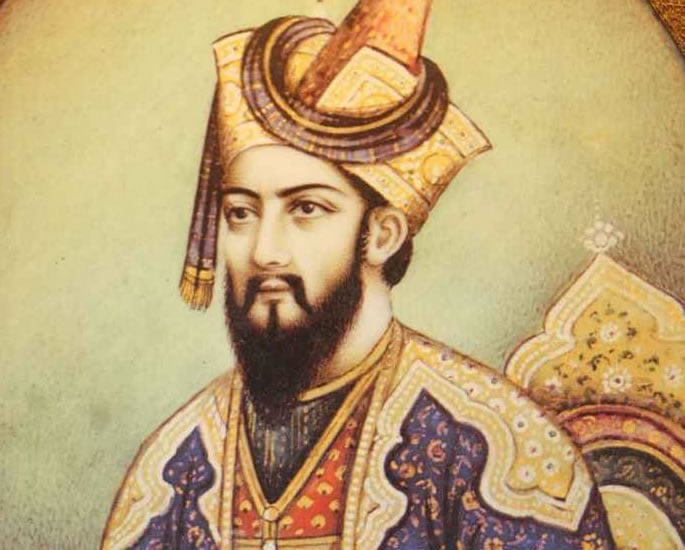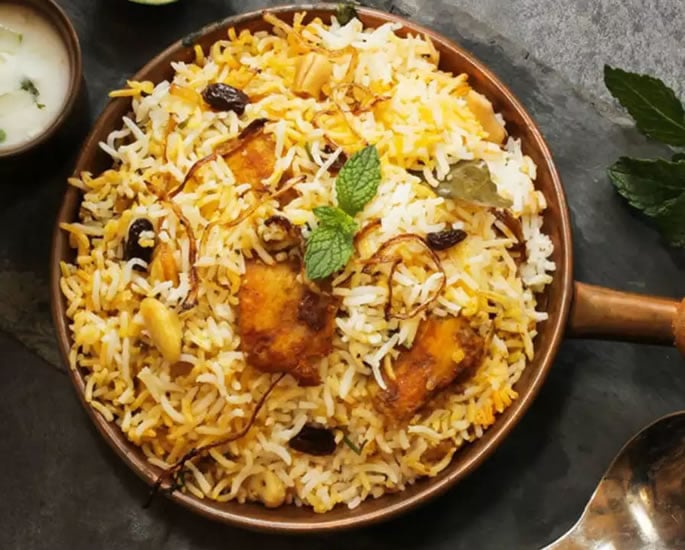The Influence of Mughlai Cuisine on modern Indian Food
India has a wide variety of cuisines and dishes but did you know that Mughlai cuisine had a major influence.
India’s culinary landscape is as diverse as its culture and heritage.
One of the most significant and enduring influences on modern Indian cuisine comes from the Mughals, who ruled the Indian subcontinent for over three centuries.
Mughlai cuisine, characterised by rich, aromatic flavours and elaborate preparations, has left an indelible mark on Indian cooking.
We explore the deep-rooted influence of Mughlai cuisine on modern Indian food, tracing the history, ingredients, cooking techniques, and the enduring legacy that continues to tantalise taste buds today.
Historical Background


The Mughal Empire, established by Babur in 1526, heralded a new era in Indian history.
It brought not only political changes but also a significant culinary transformation.
The Mughals, with their Persian and Central Asian heritage, introduced a style of cooking that emphasised the use of spices, nuts and dried fruits, creating a rich and sumptuous cuisine.
This cuisine was heavily influenced by Persian culinary traditions and incorporated elements from various regions, making it a unique blend of flavours and techniques.
Key Ingredients


Mughlai cuisine featured some key ingredients to enhance the texture and flavour of dishes.
Spices
Mughlai cuisine is known for its intricate use of spices.
Key spices include saffron, cardamom, cinnamon and nutmeg.
These spices are used to flavour rice, gravies, and kebabs, giving dishes a distinctive Mughlai touch.
Dried Fruit & Nuts
Ingredients such as almonds, cashews, pistachios, and raisins are commonly used in Mughlai cooking.
They add a rich, creamy texture and a subtle sweetness to dishes.
Milk & Cream
Milk and cream are used extensively in Mughlai cuisine to create rich, creamy gravies and desserts.
Dishes like Shahi Paneer and Badam Halwa are excellent examples of this.
Ghee
Ghee is a staple in Mughlai cooking, used for cooking rice and making gravies.
It adds depth of flavour and a distinct aroma to the dishes.
Meat
Mughlai cuisine is known for its love of meat, especially lamb and chicken.
Dishes like Rogan Josh and Chicken Korma exemplify this preference.
Influence on Modern Indian Food
Mughlai cuisine has exerted a profound and lasting influence on modern Indian food, shaping the way people cook, eat, and enjoy dishes across the Indian subcontinent.
This can be observed in various ways:
Biryani & Pulao


The Mughals introduced the concept of slow-cooked rice dishes like Biryani and Pulao.
This includes the concept of layering rice and meat in a heavy-bottomed pot, a technique known as ‘dum cooking’.
This method allowed for slow, sealed cooking that retained the flavours and aromas within the dish, ensuring that the rice absorbed the essence of the meat and spices.
Over time, the basic Mughal concept of Biryani and Pulao was adapted to regional tastes and ingredients.
Different regions of India added their own twists, leading to various regional variations of these dishes. For example, Hyderabadi Biryani is spicier and tangier, while Lucknowi Biryani is more subtly flavoured.
Kebabs & Tandoori Dishes


The Mughals popularised the use of the tandoor, a clay oven, in Indian cuisine. Tandoor cooking involves skewering marinated meat and cooking it in the tandoor’s intense, radiant heat.
This method imparts a smoky flavour and a unique tenderness to the meat, a technique that is characteristic of tandoori dishes.
There was also an emphasis on marinating meat with a blend of spices and yoghurt.
By combining their Central Asian and Persian culinary traditions with Indian ingredients and flavours, the Mughals created a fusion that resulted in kebabs and tandoori dishes with a unique Indian twist.
They also created signature kebab dishes like Seekh Kebab and Chicken Tikka, which are now beloved classics in Indian cuisine.
Gravies and Curries


Mughlai cuisine introduced the concept of rich and creamy gravies to Indian cooking.
The rich, creamy gravies and curries of Mughlai cuisine have influenced dishes like Butter Chicken, Paneer Makhani and Shahi Korma.
Mughlai cuisine also played a pivotal role in popularising tomato-based gravies in India.
The use of tomatoes, combined with spices, created a flavorful and tangy base for many Mughlai dishes.
This technique continues to be prominent in contemporary Indian cooking, providing a balance of sweetness and acidity to the curries.
Sweets & Desserts


With its Persian and Central Asian influences, Mughlai cuisine emphasised the use of milk and milk products in desserts.
Ingredients like milk, khoya, and paneer are commonly used to create creamy and luscious sweets.
Mughlai-inspired sweets often strike a balance between sweet and savoury flavours.
The addition of ingredients like saffron, cardamom and nuts creates a harmonious combination of tastes, creating a well-rounded and enjoyable dessert experience.
Some Mughlai creations include Badam Halwa, Shahi Tukda and Phirni. These desserts continue to be celebrated for their richness and complexity.
Signature Mughlai Dishes
Mughlai cuisine boasts several signature dishes known for their rich, aromatic flavours and use of exotic ingredients.
Biryani


Biryani is a fragrant rice dish characterised by its use of aromatic spices, basmati rice and marinated meat.
It’s cooked in layers, with saffron-infused rice, and slow-cooked to perfection.
Variations like Hyderabadi Biryani, Lucknowi Biryani, and Kolkata Biryani offer diverse regional interpretations.
Kebabs


Mughlai cuisine is renowned for its succulent kebabs, such as Seekh Kebab, Chicken Tikka and Galouti Kebab.
These kebabs are marinated in a blend of spices and yoghurt before being cooked in a tandoor.
Mutton Rogan Josh


This is a slow-cooked, spicy curry made with tender pieces of mutton.
The dish is known for its rich, aromatic gravy infused with Kashmiri red chillies and a blend of aromatic spices, giving it a distinctive red colour.
Paneer Tikka


While Mughal cuisine is known for its love of meat, it also made notable contributions to vegetarian fare, such as Paneer Tikka.
This dish features marinated and grilled cubes of paneer, infused with flavours of spices and yoghurt.
Mughlai Paratha


Mughlai Paratha is a stuffed flatbread filled with a spiced mixture of minced meat, typically beef or chicken.
It is shallow-fried, creating a delectable and savoury stuffed bread.
Regional Variations


The Mughal influence on Indian cuisine is not homogenous.
It has adapted and fused with regional flavours and traditions, leading to unique variations in different parts of India:
Awadhi Cuisine
Lucknow, in the northern state of Uttar Pradesh, is famous for its Awadhi cuisine, which retains many Mughal elements.
Dishes like Lucknawi Biryani and Galouti Kebabs are renowned.
Hyderabadi Cuisine
In the south, Hyderabad’s Nizams blended Mughal and local Telugu cuisine, giving birth to Hyderabadi Biryani, a spicier and tangier version of the Mughal original.
Kashmiri Cuisine
The Kashmir Valley has its own interpretation of Mughlai cuisine, with an emphasis on saffron, dried fruits, and a unique set of spices.
Rogan Josh and Yakhni are emblematic dishes.
Punjabi Cuisine
In Punjab, Mughal influences have resulted in dishes like Butter Chicken and Paneer Makhani, which are rich and creamy, reflecting the Mughlai culinary tradition.
Cultural Significance


The influence of Mughlai cuisine extends beyond the dining table; it is woven into the cultural fabric of India.
Mughlai dishes are often served during festivals, weddings, and other celebrations.
The richness and opulence of Mughlai cuisine make it a natural choice for special occasions.
Many dishes were also created in royal kitchens and their legacy continues in the form of royal culinary traditions.
Today, restaurants and hotels in India offer a taste of the grandeur that was once reserved for emperors.
The cuisine has become a significant part of culinary tourism in India.
Food enthusiasts from around the world seek out Mughlai restaurants and street food stalls to savour its flavours.
Such cooking techniques are taught in culinary schools, ensuring that the tradition is passed down to the next generation of chefs.
Mughlai cuisine has made an indelible impact on modern Indian food.
Its rich, aromatic flavours, as well as the use of spices, nuts and dried fruits, have become integral to Indian culinary traditions.
The Mughal legacy is not just a part of India’s culinary history; it’s a living and evolving tradition that continues to delight palates across the country and around the world.
As we savour the Biryani, relish the kebabs, and indulge in creamy gravies, we pay homage to the Mughal emperors who, centuries ago, introduced India to a world of flavours and left a lasting imprint on the nation’s diverse and vibrant culinary landscape.
The Mughal influence on modern Indian food is a testament to the enduring power of gastronomy to bridge cultures and generations.